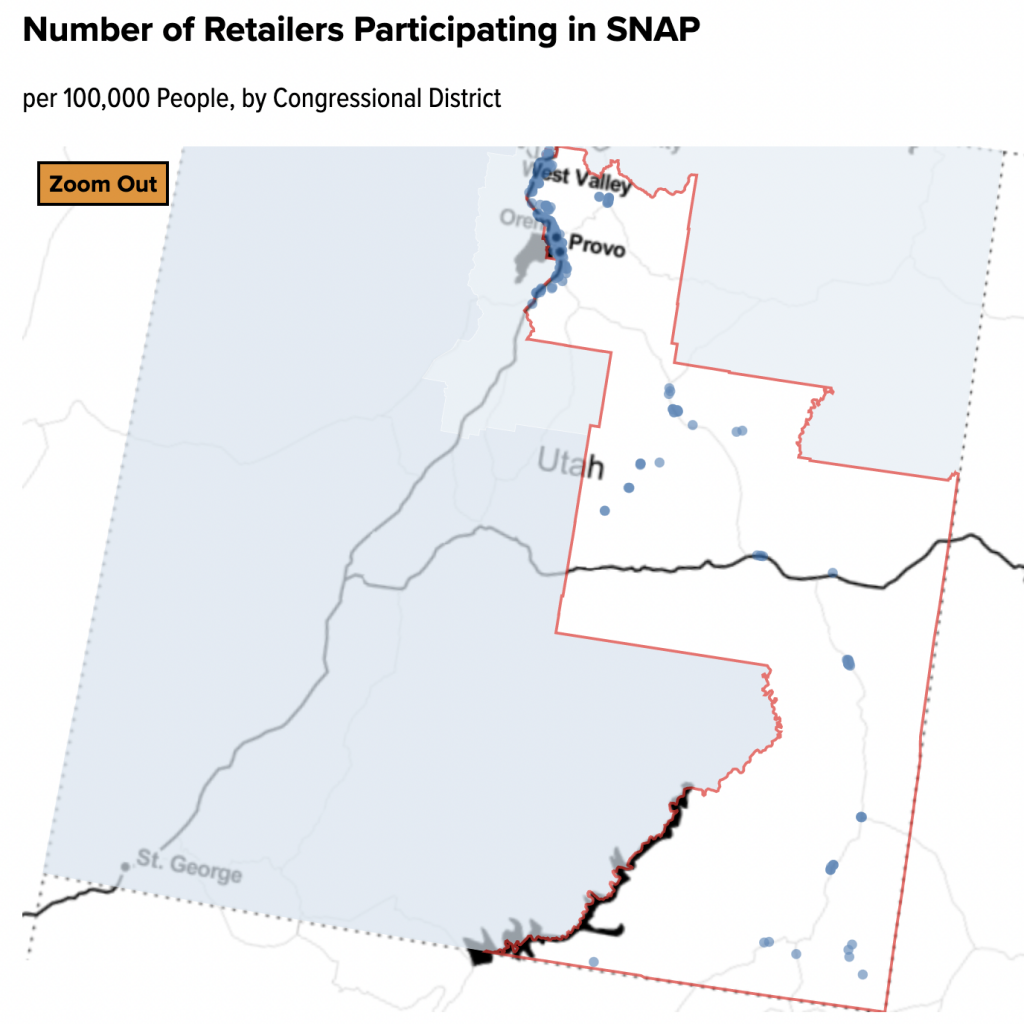What is it?
- A federal nutrition assistance program that helps people in low-income households afford healthy food options by increasing their food budget.
- Monthly funds are provided through an EBT (Electronic benefit transfer) card.
- Eligibility is determined based on income, age, family size, and other factors.
What issues does it have?
- Use of EBT funds is limited to federal-approved retailers
- Federal approval requirements are strict and specific
- Exclusivity of federal definitions of poverty
- Difficulty accessing federally-approved retailers due to transportation issues and geographical distance
Use this map to see how SNAP-eligible retailers are distributed across the country. Many states have very evident food deserts that have not been made any more accessible through SNAP.

A quick guide to SNAP Eligibility and Benefits is available through this link.
What work is being done to improve SNAP access?
The Healthy Food Financing Initiative (HFFI) was introduced to incentivize healthy food retail outlets in areas with little to no healthy food options.
- incentivizes healthy food retail outlets in healthy food insecure areas
- Results: SNAP participants’ food security improved and added sugars intake declined in the intervention neighborhood.
- Food security and added sugars intake unchanged in a comparison neighborhood without a new supermarket.
- Greater improvement in food security among SNAP participants vs. intermittent and non-SNAP participants residing in the intervention neighborhood.
- Cantor, J., Beckman, R., Collins, R. L., Dastidar, M. G., Richardson, A. S., & Dubowitz, T. (2020). SNAP Participants Improved Food Security And Diet After A Full-Service Supermarket Opened In An Urban Food Desert. Health affairs (Project Hope), 39(8), 1386–1394. https://doi.org/10.1377/hlthaff.2019.01309
